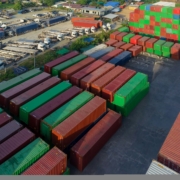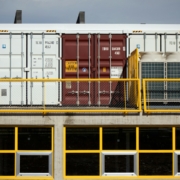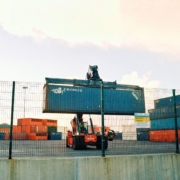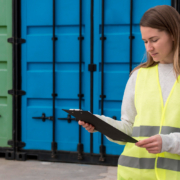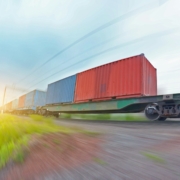Benefits of Container Transport for Your Business
Understanding the benefits of container transport can revolutionise the way your business handles logistics. It is an essential choice that can lead to greater efficiency and significant cost savings. Container transport offers a reliable solution, ensuring your goods are handled with care and delivered promptly.
One of the major advantages of container transport is the ability to streamline operations. Containers simplify the packing, loading, and unloading processes, making the entire supply chain more efficient. This not only speeds up delivery times but also reduces labour costs.
Additionally, container transport provides financial benefits by lowering transportation costs and minimising the risk of damage. Containers are designed to protect goods from the elements and rough handling. This reduces the likelihood of items being damaged or lost, ensuring that products arrive in excellent condition. By leveraging these benefits, your business can improve both its bottom line and customer satisfaction.
Overall, container transport is a valuable tool for any business looking to optimise its logistics operations. It offers numerous advantages, from cost savings and efficiency improvements to enhanced security and environmental benefits. By understanding these benefits, you can make informed decisions that support your business’s growth and sustainability.
Efficiency in Handling and Delivery
Container transport enhances efficiency in handling and delivery by standardising how goods are packed and moved. Containers are designed for quick and easy loading and unloading, which helps save time and reduces labour costs. Using containers means goods can be transferred seamlessly between ships, trucks, and trains without being unpacked and repacked. This streamlines the entire logistics process.
The efficiency of container transport also means that goods are less likely to be delayed. Timely movement of cargo is crucial for businesses that need to meet strict deadlines. By using container transport, deliveries can be scheduled more accurately, helping businesses keep their promises to customers.
Additionally, containers protect goods better during transit. This reduces the chances of damage during handling, leading to fewer disruptions and losses. Your business benefits from smoother operations, allowing you to focus on growth instead of worrying about logistical hiccups.
Cost Savings and Financial Benefits
Lower Transportation Costs
One of the main financial advantages of container transport is the reduction in transportation costs. Containers allow for maximised space utilisation, meaning you can transport more goods in fewer trips. This efficiency leads to lower fuel costs and less money spent on labour. The standardisation of container sizes also simplifies the transportation process, reducing the need for special arrangements or handling.
Reduced Risk of Damage and Loss
Using containers also significantly lowers the risk of damage and loss. Containers are sturdy and provide a high level of protection against the elements and rough handling. This durability ensures that goods reach their destination in good condition, reducing the need for costly replacements or repairs.
Furthermore, fewer damaged goods lead to higher customer satisfaction, which can translate to repeat business and better brand reputation. The financial benefits extend beyond just direct savings; they also include long-term gains from improved efficiency and customer relations. These cost savings make container transport a smart, economical choice for businesses looking to improve their logistics and bottom line.
Environmental Advantages
Lower Carbon Footprint
Container transport is more environmentally friendly compared to other forms of transport. By maximising space in each container and reducing the number of trips needed, container transport cuts down on fuel consumption. Fewer trips mean fewer emissions, helping to lower the overall carbon footprint of your business operations. Shipping goods in bulk with containers is much more efficient than smaller, more frequent shipments.
Sustainable Practices in Container Transport
Many container transport providers are adopting sustainable practices to further enhance their environmental benefits. This includes using fuel-efficient vehicles, implementing green logistics strategies, and investing in modern, eco-friendly equipment. Companies are increasingly committed to reducing their environmental impact, which aligns with the growing demand for sustainable business practices. By choosing container transport, your business can take part in these green initiatives, supporting sustainability while also benefiting from efficient transport services.
Enhanced Security and Tracking
Advanced Security Features
Container transport offers heightened security features to protect your goods during transit. Containers are built to be tamper-resistant, lowering the chances of theft or unauthorised access. Many providers use advanced locking systems and sealing technologies to enhance security further. This robust protection ensures that your products are safe from the moment they are packed until they reach their final destination.
Real-Time Tracking and Monitoring
Modern container transport services come with real-time tracking and monitoring systems. GPS technology allows you to know the exact location of your goods at any given moment. This feature is invaluable for maintaining control over your shipments and ensuring timely deliveries. Real-time tracking also helps identify any potential issues quickly, allowing for prompt intervention. With these monitoring systems, you can provide accurate updates to your customers, improving their overall experience and satisfaction.
Conclusion
Container transport in Brisbane offers multiple benefits that can significantly enhance your business operations. From improving efficiency in handling and delivery to providing substantial cost savings, container transport is a reliable solution for your logistics needs. Its environmental advantages and advanced security features further make it a smart choice.
By leveraging these benefits, your business can achieve better operational efficiency, lower costs, and a stronger commitment to sustainability. Choosing the right container transport partner is key to maximising these advantages.
For expert container transport services in South-East Queensland, trust DNV Transport. We are dedicated to providing efficient, secure, and eco-friendly transport solutions designed to meet your specific needs. Visit our website to learn how we can support your logistics and help your business thrive.

